Grades inflation destroying k-12 education
Belatedly, the destructive fallout of haphazard, irresponsible evaluation of the academic capabilities of high school-leavers has prompted soul-searching within the small but growing minority of bona fide educationists about India’s outdated examination system which rewards rote learning – Summiya Yasmeen writes about grades inflation destroying k-12 education
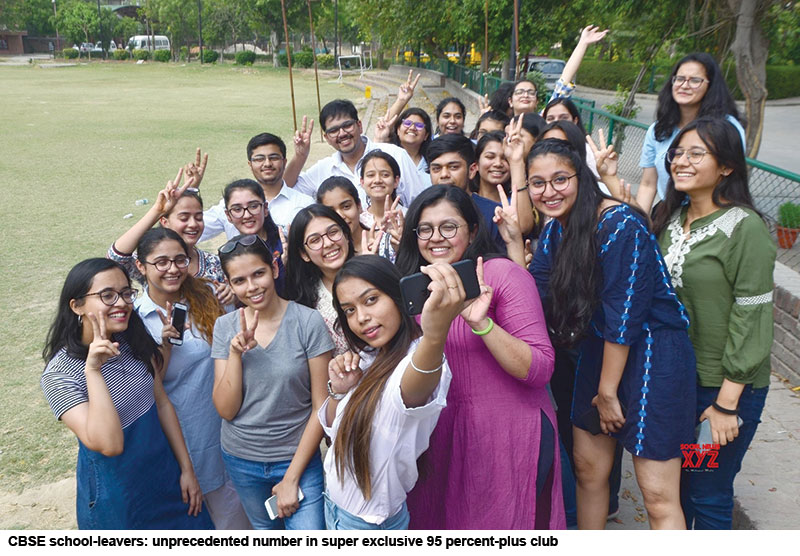
The last time handpicked Indian secondary students wrote PISA (Programme for International Student Assessment), a transnational exam designed to test the science and maths capabilities of 15-year-olds worldwide, the Indian cohort was ranked #73 among 74 countries. Moreover, the Annual Status of Education Report of the globally reputed Delhi/Mumbai-based Pratham Education Foundation routinely reports that the reading (vernacular languages) and maths capabilities of primary school students in the country’s 1.2 million rural schools are going from bad to worse. However, judging by recent newspaper headlines and televised euphoria of school-leaving students celebrating their exam results, contemporary India hosts the world’s largest number of teenage academic prodigies.
In early May, the pan-India Delhi-based Central Board of Secondary Education (CBSE) and the Council of Indian School Certificate Examinations (CISCE) announced best-ever results of their class X and XII school-leaving exams, provoking nationwide celebrations. The national pass percentage in CBSE’s class XII exam — written by 1.3 million students of 20,299 affiliated schools countrywide in March — rose to 83.4 percent and a staggering 94,299 class XII school-leavers averaged 90 percent-plus (cf. 63,387 in 2016) — an all-time high for the Central government-run CBSE. The super exclusive club of 95-plus percentagers nearly doubled with 17,690 students averaging 95 percent-plus (cf. 9,351 in 2016).
Similarly, the class X and XII results of 2,200 CISCE affiliated schools nationwide were exceptional. The national pass percentage in this privately managed school board’s class X ICSE exam was 98.54 percent and 96.52 percent in class XII. And for the first time in the history of this vintage (estb.1958) exam board — with which some of India’s top-ranked schools including Doon (Dehradun), Rishi Valley (Chittoor, Andhra Pradesh) and Cathedral & John Connon (Mumbai) are affiliated — two students averaged a perfect 100 percent (400/400) in the class XII ISC exam. Moreover, 16 students recorded a near perfect aggregate of 399 and 36 aggregated 398.
However, the extraordinarily large number of students achieving near perfect scores has raised the bogey of grades inflation because of liberal evaluation of exam answer papers and in particular exposed the ubiquitous practice of ‘marks moderation’ and award of ‘grace marks’. The celebration of exceptional board results has ended quickly with the country’s top-ranked undergrad education colleges — the natural destination of school-leavers — having stipulated corresponding high “cut offs”, i.e, the minimum average percentage for admission, of 95 percent-plus.
Suddenly, a distinction average score of 75 percent in the school-leaving class XII exam has become value-less and even students who averaged 90 percent are scrambling to be admitted into undergrad colleges and study programmes of choice.
The root cause why admission into higher education institutions, particularly undergrad colleges, has become harder even for board exam toppers is decades of under-investment in education and human capital development — post-independence India’s annual outlay (Centre plus states) for education has averaged a mere 3.5 percent for seven decades cf. 5-10 percent in the developed OECD and newly emergent ASEAN countries — creating bottleneck conditions. The country’s 350 million youth in the 15-29 years age group are served by a mere 39,000 colleges and 907 universities. And at best, only 1,000 top-ranked arts, science and commerce colleges offer undergraduate education of minimally acceptable quality. Hence the annual stampede for admission into premier colleges.
Against this demand-supply disequilibrium backdrop, runaway grades inflation has negated the extraordinary effort that students invest in preparing for board exams. With hundreds of thousands of the 15.5 million class XII students who write the school-leaving exams of the CBSE, CISCE and 31 state boards averaging 80 percent-plus and top-ranked colleges stipulating corresponding higher cut-offs, admission into tertiary education has become more difficult — rather than easier — for diligent school-leavers.
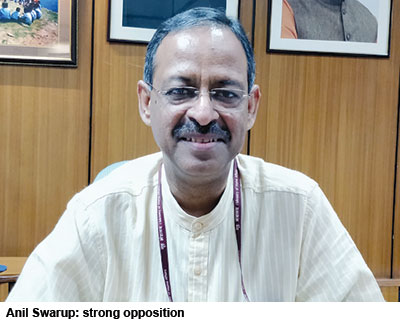 “Unreasonably high marks are awarded in board exams year after year because all stakeholders in K-12 education are satisfied with the status quo. Students love high marks as do parents. School principals, teachers and exam boards are evaluated on students’ board exam performance, so it also serves their purpose. But the consequences of grades inflation are anti-social,” says Anil Swarup, former education secretary in the Union HRD ministry and author of the recently released Not just a Civil Servant (2019).
“Unreasonably high marks are awarded in board exams year after year because all stakeholders in K-12 education are satisfied with the status quo. Students love high marks as do parents. School principals, teachers and exam boards are evaluated on students’ board exam performance, so it also serves their purpose. But the consequences of grades inflation are anti-social,” says Anil Swarup, former education secretary in the Union HRD ministry and author of the recently released Not just a Civil Servant (2019).
According to Swarup, during his tenure (2016-2018) in the HRD ministry, he attempted to check grades inflation by convening a special meeting of the Council of Boards of School Education (COBSE) in 2017. “CBSE was moderating marks for several reasons including compensating students for difficult question papers and subjectivity in evaluation. In April 2017 when I was education secretary, we devised a detailed strategy to abolish the marks moderation policy but this proposal was strongly opposed by politicians, parents and other stakeholders. Indeed, some parents went to the Delhi high court and obtained a stay order against abolition of moderation. It’s very unfortunate that the grades inflation trend is continuing. Soon exams will become redundant and an exercise in futility,” says Swarup.
he moderation of marks policy was introduced in 1992 by CBSE to compensate for errors/ambiguities/difficulties in question papers and examiners’ subjectivity, and to maintain parity with previous year results. However, during the past five-six years, CBSE’s generous moderation policy has become synonymous with arbitrary boosting of students’ average scores. Anita Karwal, chairman of CBSE, refused to grant an interview or answer email messages questioning why CBSE examiners continue to award generous moderation marks. Typically, she seems unaware of her public accountability as chair of the country’s largest and most influential school exams board.
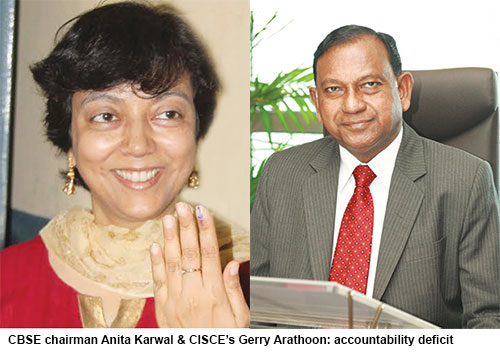 Although quite clearly the privately managed CISCE board practices grades inflation populism coterminously with CBSE and other school-leaving exam boards — as testified by the record number of students attaining the maximum and near maximum aggregate score of 400 in its best four out of five subjects — Gerry Arathoon refused to disclose the number of students averaging 90 percent plus in the board’s ISC class XII exam. Instead he ascribes the first ever phenomenon of two students aggregating 400/400 to their hard work and diligence. “This perfect score is a first time record in the council’s board exams. But there has been no marks spiking or moderation by our examiners. It is the result of the hard work of the students and they should get all credit for this achievement,” said Arathoon to the media in Delhi on May 7.
Although quite clearly the privately managed CISCE board practices grades inflation populism coterminously with CBSE and other school-leaving exam boards — as testified by the record number of students attaining the maximum and near maximum aggregate score of 400 in its best four out of five subjects — Gerry Arathoon refused to disclose the number of students averaging 90 percent plus in the board’s ISC class XII exam. Instead he ascribes the first ever phenomenon of two students aggregating 400/400 to their hard work and diligence. “This perfect score is a first time record in the council’s board exams. But there has been no marks spiking or moderation by our examiners. It is the result of the hard work of the students and they should get all credit for this achievement,” said Arathoon to the media in Delhi on May 7.
Quite obviously, Prof. Geeta Gandhi Kingdon, the highly knowledgeable chairperson of education economics and international development at the Institute of Education of University College, London, and president of the CISCE-affiliated City Montessori School, Lucknow — the world’s largest school (55,000 students), according to Guinness World Records — doesn’t buy Arathoon’s claim that CISCE doesn’t moderate students’ grades. According to her, grades inflation through moderation is practiced by all school exam boards and is politically driven, particularly in the states, to gain electoral advantage.
“One explanation for undue hiking of marks is populism under certain political regimes. The pass rate in the Uttar Pradesh high school board exams was 40.2 percent under a BJP government in 2002, it rose to 74.4 percent in the SP (Samajwadi Party) regime in 2007, came crashing down to 40.1 percent in 2008 in the BSP (Bahujan Samaj Party) reign, only to shoot up again to 86.6 percent in 2013 and 87.7 percent in 2016 under SP rule. While such political gimmickry may generate a feel-good factor and confer some short-term electoral advantage, it brazenly treats the school examination system as a political football,” wrote Kingdon in a scathing 1,200-word op-ed page essay in the best-selling Times of India (May 22).
Severely criticising grades inflation and particularly ubiquitous discretionary marks moderation practised by examiners of all 33 school-leaving exam boards countrywide, Kingdon writes that “tampering with marks erodes public trust in exam boards, undermines the credibility of the assessment patterns, and breeds cynicism about the education system”. “It also cheats children: by deliberately giving them wrong signals about their learning levels, it sets them up for an emotional fall when they realise their true ability in competitive college entrance or professional examinations. It is unbecoming for a respectable country to be seen engaging in large-scale open fraud on its own children,” she opines.
Belatedly, the destructive fallout of haphazard, irresponsible evaluation of the academic capabilities of high school-leavers has prompted soul-searching within the small but growing minority of bona fide educationists about India’s outdated examination system which rewards rote learning. For the past several decades, the country’s 33 exam 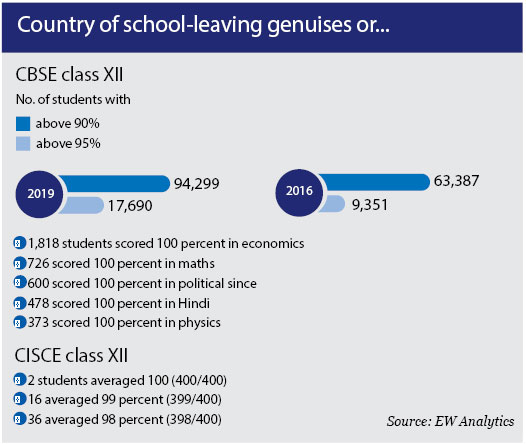 boards including the pan-India CBSE and CISCE, have done little to change the design and typology of exam question papers, despite general agreement that K-12 education should develop the critical thinking, creativity and knowledge application skills rather than memorisation capabilities, of children. With evaluation and marking processes programmed to reward students who submit preset model answers rather than the cognitive skills and capabilities of examinees, private tutors and coaching institutes drill and skill students to regurgitate model answers which examiners are obliged to reward fully.
boards including the pan-India CBSE and CISCE, have done little to change the design and typology of exam question papers, despite general agreement that K-12 education should develop the critical thinking, creativity and knowledge application skills rather than memorisation capabilities, of children. With evaluation and marking processes programmed to reward students who submit preset model answers rather than the cognitive skills and capabilities of examinees, private tutors and coaching institutes drill and skill students to regurgitate model answers which examiners are obliged to reward fully.
Well-known newspaper columnist and nationally respected director of the CISCE-affiliated Kolkata-based Modern High School for Girls (estb. 1952), Devi Kar has been warning against the dangers of grades inflation for over a decade. “Exam board results have lost all credibility. By awarding unwarrantedly high scores to all children, we are doing them a disservice. Until recently, the CISCE board had its own character and identity, but now it is a CBSE clone. With examiners of CBSE and CISCE being over-liberal while evaluating and marking exam papers, examinees are free to write any which way they want with scant regard for 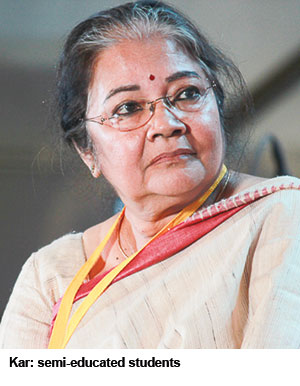 concepts, grammar and spelling. In their answer papers, if they include key-words provided in marking guidelines given by exam boards to their evaluators, they are fully rewarded. Independent thinkers and imaginative students run the danger of being penalised for not using pre-decided words and phrases. The K-12 education system is churning out semi-educated students who are not thinkers but experts in the art of cracking examinations,” laments Kar.
concepts, grammar and spelling. In their answer papers, if they include key-words provided in marking guidelines given by exam boards to their evaluators, they are fully rewarded. Independent thinkers and imaginative students run the danger of being penalised for not using pre-decided words and phrases. The K-12 education system is churning out semi-educated students who are not thinkers but experts in the art of cracking examinations,” laments Kar.
Arunabh Singh, a graduate of Delhi University with a Masters in education management from King’s College, London, and currently director of the CBSE-affiliated Nehru World School, Ghaziabad, concurs. “Over the years, the marking style of all exam boards has become standardised and predictable. Simultaneously, a growing number of schools and coaching institutes have mastered the art of predicting class X and XII exam papers, preparing model answers and ensuring that students write perfect answers. All exam boards need to immediately abolish the practise of marks moderation and initiate exam reforms to test the real learning of students rather than their ability to reproduce ‘right’ answers,” says Singh.
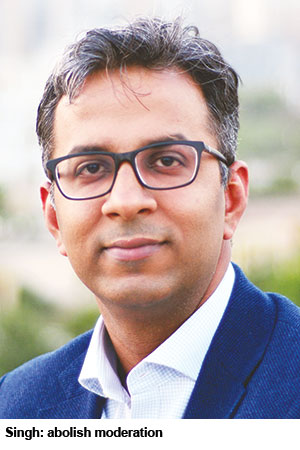 With 90 percent average in school-leaving exams having become the new normal, students who score less are relegated to the status of under-performers and suffer social and peer ridicule. Every summer, even as newspapers splash the euphoric faces of toppers on page one, tucked away in the inside pages are tragic stories of students who suffer self-harm and often kill themselves because of their low-medium scores in board exams. In the southern state of Telangana, 20 class XII students have reportedly taken this extreme step since the results of the state board’s intermediate (class XII) examinations were announced on April 18.
With 90 percent average in school-leaving exams having become the new normal, students who score less are relegated to the status of under-performers and suffer social and peer ridicule. Every summer, even as newspapers splash the euphoric faces of toppers on page one, tucked away in the inside pages are tragic stories of students who suffer self-harm and often kill themselves because of their low-medium scores in board exams. In the southern state of Telangana, 20 class XII students have reportedly taken this extreme step since the results of the state board’s intermediate (class XII) examinations were announced on April 18.
Writing in the Times of India (May 14), Sanjay Kumar, India country director of the Mittal Institute at Harvard University, urges parents, educators and the public, to start paying attention to “those who get less than 90 percent, who fall between different divisions and those who could not clear the exam”. “While students above 90 percent deserve to be celebrated, students falling under different categories should never be ignored or boycotted. Those who could not clear the exam do not deserve to be ignored or written off. For everyone, board exams should just be a means and not the goal,” advises Kumar.
High averages in the class X and XII boards have assumed life and death importance because they are the sole measure for admission into the country’s 39,000 pre-university and undergraduate colleges and 900 universities. According to knowledgeable educationists, the CBSE and CISCE exam boards, which hitherto adopted more rigorous and discretionary evaluation systems, have been forced to resort to grades inflation to compete with the country’s 31 state boards to ensure that students of affiliated schools are not at a disadvantage in the annual scramble for admission into the country’s top-ranked colleges and universities.
For foolish egalitarian reasons, the Union HRD ministry, University Grants Commission and the All India Council for Technical Education (which supervises and regulates all engineering and technical undergrad colleges countrywide) mandate that higher ed institutions give equal weight to scores awarded by all 33 exam boards in the school-leaving class X and XII examinations even though it’s common knowledge that the exams of state boards — some of whom permit widespread cheating and malpractice — are undemanding.
To close the circle, the managements of the country’s 35,500 undergrad arts, science and commerce colleges affiliated with state government/Central universities are discouraged or barred from conducting admission entrance tests and have no option but to rely on board exam results.
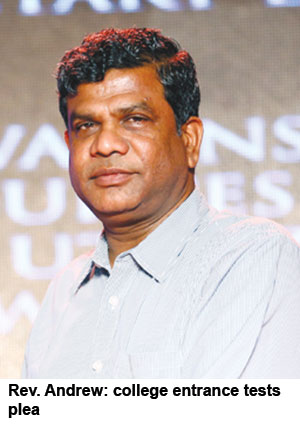 “Continuous grades inflation and moderation practised by school exam boards including the pan-India CBSE, has made it very difficult to admit undergrad students on merit. We have to solely rely on exam board report cards. Since 2005 when the Tamil Nadu state government mandated that students should be admitted solely on the basis of their class XII marks irrespective of exam boards, we haven’t conducted entrance tests. It’s unfair and impossible to measure the competence of students from differing exam boards which have varied question paper patterns and evaluation systems. All undergraduate colleges should be allowed to conduct their own entrance tests to admit students on true merit,” says Rev. Dr. F. Andrew SJ, principal of Loyola College, Chennai, ranked Tamil Nadu’s #1 arts, science and commerce college in the latest EducationWorld India Private Higher Education Rankings 2019-20.
“Continuous grades inflation and moderation practised by school exam boards including the pan-India CBSE, has made it very difficult to admit undergrad students on merit. We have to solely rely on exam board report cards. Since 2005 when the Tamil Nadu state government mandated that students should be admitted solely on the basis of their class XII marks irrespective of exam boards, we haven’t conducted entrance tests. It’s unfair and impossible to measure the competence of students from differing exam boards which have varied question paper patterns and evaluation systems. All undergraduate colleges should be allowed to conduct their own entrance tests to admit students on true merit,” says Rev. Dr. F. Andrew SJ, principal of Loyola College, Chennai, ranked Tamil Nadu’s #1 arts, science and commerce college in the latest EducationWorld India Private Higher Education Rankings 2019-20.
Politically popular grades inflation and false equivalence accorded to all 33 examination boards across the country combined with prohibition against undergraduate colleges conducting their own admission entrance tests have enabled students of schools affiliated with state exam boards to flood the country’s colleges and universities. Unable to cope with rigorous collegiate curriculums, they have dumbed down the country’s higher education institutions. According to an 2013 employability survey conducted by Aspiring Minds, a Delhi-based job seekers evaluation and certification company, 47 percent of the country’s graduates (of three-year bachelor’s degree programmes) are unemployable in the knowledge economy.
Fortunately, the country’s private universities, which have grown from 14 in 2008 to 334 in 2019, have been miraculously spared this self-defeating populism and are free to conduct their own admission entrance tests to admit the most suitable and meritorious school-leavers. All of them, in particular new genre private universities such as Ashoka, O.P. Jindal, BML Munjal modelled after premier private Ivy League varsities of America, have devised elaborate admission selection processes comprising rigorous entrance tests and personal interview.
For instance, the highly-regarded O.P. Jindal Global University, Sonipat (JGU, estb. 2009) — ranked among India’s Top 10 private universities in the EducationWorld India Private Higher Education Rankings 2019-20 — conducts a mandatory entrance exam JSAT (Jindal Scholastic Aptitude Test) for admission into all undergraduate study programmes. In 2018, 10,000 students applied for admission into JGU’s undergraduate programmes. Of them, only 1450 were admitted.
“Board exam results are not an adequate measure of school-leavers’ capabilities and cannot be the be-all indicator for admission into higher education institutions. That’s why at JGU, we have taken great pains to devise a holistic  admission process which includes an aptitude test — JSAT which assesses students’ verbal, logical and quantitative skills — personal statement/essay; supplementary application, and personal interview. It’s insane that some public colleges in Delhi have been forced to stipulate 100 percent admission cut-offs because of too many 95 percenters,” says Sean P. Bala, an empirical religions graduate of Harvard University who teaches inter-disciplinary studies and is director of admissions and outreach at JGU.
admission process which includes an aptitude test — JSAT which assesses students’ verbal, logical and quantitative skills — personal statement/essay; supplementary application, and personal interview. It’s insane that some public colleges in Delhi have been forced to stipulate 100 percent admission cut-offs because of too many 95 percenters,” says Sean P. Bala, an empirical religions graduate of Harvard University who teaches inter-disciplinary studies and is director of admissions and outreach at JGU.
Unsurprisingly, universities abroad are also wary and distrustful of certificates issued by India’s school exam boards. British, Australian and Canadian universities stipulate rigorous admission criteria which go beyond academic grades for undergrad admissions, and applicants to American universities are obliged to write the Scholastic Aptitude Test (SAT), a post-class XII common entrance exam conducted by the College Board, USA, and written by 1.8 million students worldwide aspiring for admission into US colleges and universities.
Comments David Joiner, assistant director of Global Admissions at the University of California, Santa Cruz (UCSC), USA: “The UCSC admissions team is well-versed about the variety of credentials and systems in India, including CBSE. Our faculty carefully assesses high school-leavers’ achievements in academics and co-curricular activities. This means that no single factor influences admission. We also evaluate applicants’ SAT scores.”
The erosion of public and institutional trust and confidence in the certification of India’s school examination boards has contributed to the rising popularity of international schools affiliated with offshore examination boards such as the UK-based Cambridge Assessment International Education (CAIE) and International Baccalaureate (IB), Geneva, whose certification is readily accepted by foreign universities. For instance over the past decade, the number of Cambridge affiliated schools in India has grown from 145 in 2009 to 480 in 2019 and IB schools from 27 in 2005 to 135 currently. That’s because apart from testing and certifying school-leavers, these exam boards design excellent syllabuses and curriculums guidelines for affiliated schools.
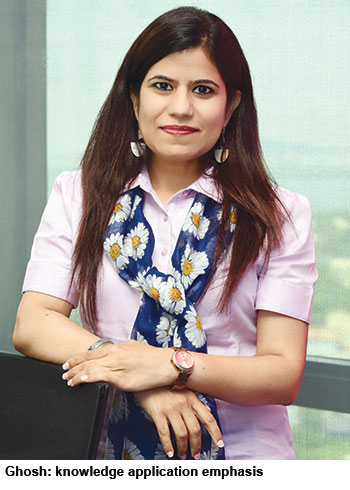 “All our affiliated schools follow syllabuses and pedagogies which promote critical and independent thinking, with our school-leaving exams testing the knowledge application skills of students. No amount of rote learning will enable students to score well in Cambridge exams. Our evaluation systems are rigorous, principled and test the analysis, critical thinking and problem-solving skills of students. India’s exam boards should be open to adopting and learning from internationally respected K-12 evaluation and assessment systems,” says Ruchira Ghosh, the Mumbai-based regional director (South Asia) of Cambridge International.
“All our affiliated schools follow syllabuses and pedagogies which promote critical and independent thinking, with our school-leaving exams testing the knowledge application skills of students. No amount of rote learning will enable students to score well in Cambridge exams. Our evaluation systems are rigorous, principled and test the analysis, critical thinking and problem-solving skills of students. India’s exam boards should be open to adopting and learning from internationally respected K-12 evaluation and assessment systems,” says Ruchira Ghosh, the Mumbai-based regional director (South Asia) of Cambridge International.
This advice is seconded by Shomie Das, the Cambridge (UK)-educated former physics teacher at Gordonstoun School, Scotland, former headmaster of the Doon School, Dehradun and Lawrence School, Sanawar. “The award of inflated marks and grades by CBSE and CISCE schools has resulted in massive erosion of public trust in India’s school examination boards.
Nobody including higher education institutions take the unbelievably high scores they award seriously. My advice to India’s national and state boards is to make concerted efforts to switch to the International Baccalaureate system of teaching and assessment. The IB board encourages the development of critical thinking skills of children from youngest age. We owe it to our students to enable rather than disable them for success in higher education and workplaces,” says Das, until recently the Hyderabad-based chairman of the People’s Combine Educational Initiatives Pvt. Ltd, which managed five IB-affiliated Oakridge International schools in peninsular India, prior to its $229 million (Rs.1,600 crore) sale to Hong Kong-based education multinational Nord Anglia Education.
Accoding to Das, India’s premier pan-India CBSE/CISCE examination boards need to immediately initiate root and branch exam reforms and abolish marks moderation. “This will prompt state examination boards to follow suit. Runaway grades inflation forces college managements to raise admission cut-offs. This has dangerous social governance implications,” he warns.
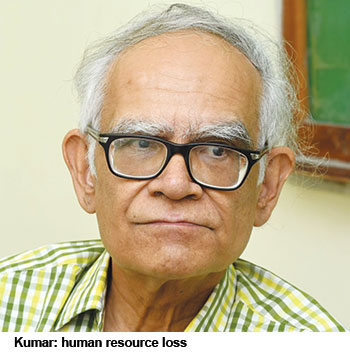 The inevitable anti-social outcomes of faulty exam evaluation processes are underlined by Dr. Krishna Kumar, former director of NCERT (National Council of Educational Research & Training) and hitherto professor of education at Delhi University. “Exam boards are encouraging exact replication of model answers from guides and textbooks rather than original and creative responses. An exam reform initiative started in CBSE in 2008, in response to a position paper of the National Curriculum Framework 2005, did not survive the change of organisational headship. The paper had highlighted some of the absurdities of the examination system and recommended several reforms including changes in question paper setting, introduction of oral testing and groupwork evaluation, and enhancing the pay of teacher-examiners. If the evaluation system continues unchanged, an increasing number of colleges will admit students on arbitrary and chaotic criteria, excluding capable and competent students from the possibility of excelling in higher education. That will be a huge loss of human resource in the long run. In schools, the quality of learning will deteriorate as learning will be geared towards scoring perfect marks in board exams to the neglect of inquiry, reflection and application. Coaching shops, of course, will thrive,” he warns.
The inevitable anti-social outcomes of faulty exam evaluation processes are underlined by Dr. Krishna Kumar, former director of NCERT (National Council of Educational Research & Training) and hitherto professor of education at Delhi University. “Exam boards are encouraging exact replication of model answers from guides and textbooks rather than original and creative responses. An exam reform initiative started in CBSE in 2008, in response to a position paper of the National Curriculum Framework 2005, did not survive the change of organisational headship. The paper had highlighted some of the absurdities of the examination system and recommended several reforms including changes in question paper setting, introduction of oral testing and groupwork evaluation, and enhancing the pay of teacher-examiners. If the evaluation system continues unchanged, an increasing number of colleges will admit students on arbitrary and chaotic criteria, excluding capable and competent students from the possibility of excelling in higher education. That will be a huge loss of human resource in the long run. In schools, the quality of learning will deteriorate as learning will be geared towards scoring perfect marks in board exams to the neglect of inquiry, reflection and application. Coaching shops, of course, will thrive,” he warns.
With runaway grades inflation and corresponding high cut-offs imposed by colleges reducing the huge effort invested by millions of students preparing for board exams to an exercise in futility, the case for revamping board exams has become overwhelming and urgent. With the BJP-led NDA having returned to power in Delhi with a huge majority in the recently concluded General Election 2019, this is the right time for it to address the menace of grades inflation and initiate urgent exam reforms.
Restoring credibility and purpose to the national/state school-leaving exams of the country’s 33 board examinations written by 15.5 million children annually, deserves the urgent attention of the new HRD minister.
Fighting grades inflation: EW suggestions
In the wake of runaway grades inflation and ‘marks moderation’ in the school-leaving class X and XII examinations of the country’s 33 exam boards, including the pan-India CBSE and CISCE, the newly elected BJP-led NDA government at the Centre needs to include school examination reforms among its topmost education reform priorities. The country’s school exam boards are experiencing a credibility crisis with a nationwide surge in the number of students averaging 90 percent-plus in their exams. The new HRD minister needs to urgently initiate exam reforms to restore public trust and confidence in school-leaving certificates.
Following a dipstick survey of eminent educationists, principals and experienced teachers, EducationWorld presents the new HRD minister some exam reform guidelines.
Convene an extraordinary general meeting of the Council of Boards of School Education (COBSE) and persuade the country’s 33 exam boards to abolish ‘marks moderation’ and ‘grace marks’ in school-leaving exams.
Revisit the position paper on examination reforms of the National Curriculum Framework 2005. It made valuable suggestions including changing the question paper format to test students’ critical thinking/application skills rather than rewarding rote learning; introducing multiple modes of assessment including oral testing, groupwork evaluation; replacing short answer with multiple choice questions; raising the remuneration of teacher-examiners; promoting transparency in grades allocation; shifting from direct testing by exam boards to rigorous audit of school and teacher assessments, and introduction of open-book, on-demand online exams.
Implement the exam reform recommendations made by the TSR Subramanian Committee Report 2016. Its two main recommendations are: introduction of on-demand board exams to offer flexibility and reduce year-end stress of students and parents, and design of a pan-India National Test for class XII students.
Permit arts, science and commerce colleges to conduct their own entrance exams and/or introduce a post-class XII common entrance exam modelled after the American SAT (Scholastic Aptitude Test).
Appoint a committee of respected educationists and school principals to study, recommend and adapt best evaluation and assessment practices of international exam boards such as the Cambridge International (UK) and International Baccalaureate (Geneva).
Exam reform must be coterminous with other reforms: improved teacher training, manageable teacher-pupil ratios and contemporisation of curriculums and textbooks.
The prerequisite of exam and K-12 education reform is increasing annual expenditure on public education from 3.5 percent to 6 percent of GDP as recommended by the Kothari Commission (1966) and TSR Subramanian Committee (2016).
With Hemalatha Raghupathi (Chennai)





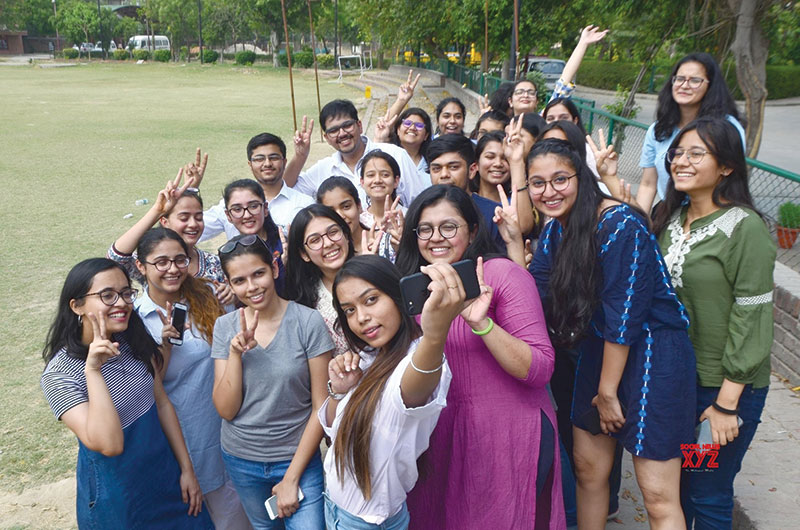
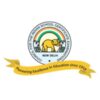










Add comment